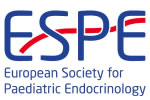hrp0082p1-d2-6 | Adrenals & HP Axis | ESPE2014
Descriptive Analyses of Turner Syndrome
Kamrath Clemens , Hartmann Michaela , Boettcher Claudia , Wudy Stefan
hrp0086p1-p23 | Adrenal P1 | ESPE2016
The Urinary Steroidome of Children with Classic 21-Hydroxylase Deficiency Treated with Hydrocortisone
Kamrath Clemens , Wettstaed Lisa , Boettcher Claudia , Hartmann Michaela , Wudy Stefan
hrp0094p2-107 | Diabetes and insulin | ESPE2021
A paradoxical conundrum: diabetic ketoacidosis resulting in treatment-resistant hypokalemic alkalosis
Rakicioglu Hande , Kamrath Clemens , Karatsiolis Platonas , Genthner Nora , Wudy Stefan ,
hrp0094p2-326 | Growth and syndromes (to include Turner syndrome) | ESPE2021
Differential diagnosis of pre- and postnatal short stature revisited: 3-M syndrome
Karatsiolis Platonas , Kamrath Clemens , Rakicioglu Hande , Wudy Stefan ,
hrp0097p1-435 | Diabetes and Insulin | ESPE2023
Management of severe diabetic ketoacidosis with extremely high doses of insulin in a girl with severe insulin resistance syndrome due to compound heterozygous mutations in the insulin receptor gene
Kamrath Clemens , Genthner Nora , Rakicioglu Hande , Wudy Stefan
hrp0098p2-284 | Thyroid | ESPE2024
Primary congenital hypothyroidism in three sisters: evidence for clinical relevance of two mutations of hitherto unknown significance
Wolf Felicitas , Herbst Susanne , Pohlenz Joachim , Karatsiolis Platonas , Rakicioglu Hande , Kamrath Clemens , A. Wudy Stefan
hrp0098p3-29 | Bone, Growth Plate and Mineral Metabolism | ESPE2024
Rare combinations: Loeys-Dietz Syndrome Type 2 with Type 1 Diabetes mellitus and Loeys-Dietz Syndrome Type 4 with congenital hypothyroidism due to thyroid hypoplasia.
Karatsiolis Platonas , Rakicioglu Hande , Wolf Felicitas , Biskup Saskia , Dewenter Malin , Meinhardt Andrea , Kamrath Clemens , Wudy Stefan
hrp0098p3-121 | Fetal, Neonatal Endocrinology and Metabolism | ESPE2024
Treatment of an infant with congenital hyperinsulinism due to kcnj11-mutation with octreotide via continuous subcutaneous infusion: a case report
Muehlschlegel Geeske , Alice Manzardo Olimpia , Hodde Franka , Ritter Marie , Van der Werf Natascha , Kamrath Clemens
hrp0086p1-p887 | Thyroid P1 | ESPE2016
EEG Alterations are Common in Hashimoto’s Thyroiditis
Boettcher Claudia , Brosig Burkhard , Windhaus Henriette , Kamrath Clemens , Wudy Stefan A. , Hahn Andreas
hrp0098p3-16 | Adrenals and HPA Axis | ESPE2024
Adrenal insufficiency due to bilateral adrenal haemorrhage in a newborn after suffering perinatal asphyxia: a case report
Alice Manzardo Olimpia , Muehlschlegel Geeske , Hodde Franka , Ritter Marie , Weih Sandra , Van der Werf Natascha , Kamrath Clemens



